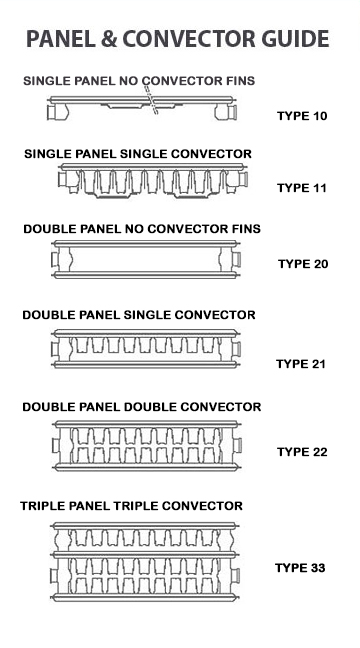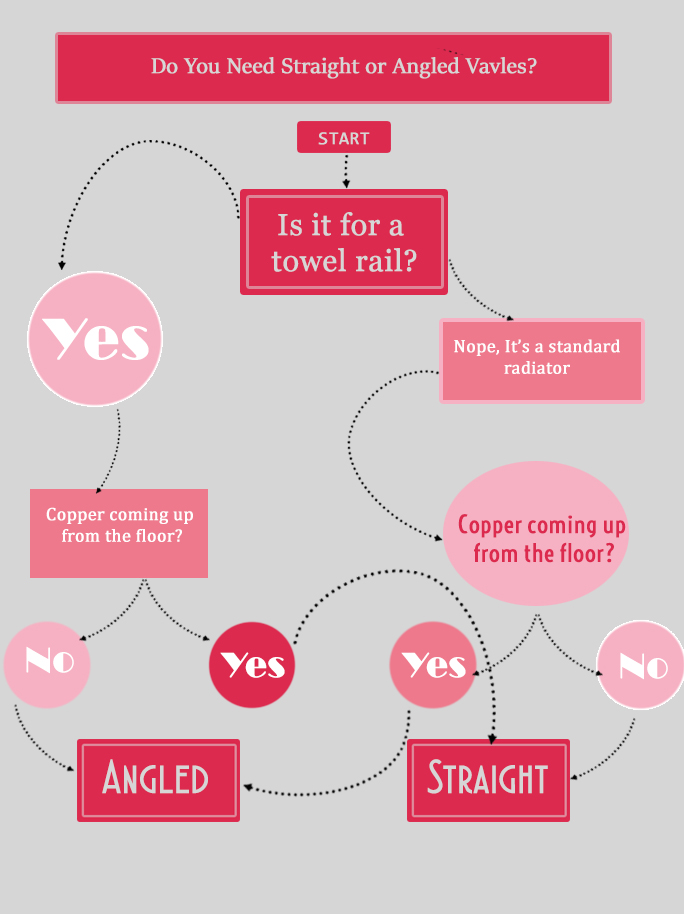It’s autumn and the night’s are drawing in, which means it’s the start of peak-season for people replacing and fixing radiators and investing money into their central heating system. We had a radiator fitted last week and I wanted to share a few tips for those who are buying radiators for themselves; as very few people actually know what they need.
Before you choose a radiator you need to consider these two important factors:
Other useful things to know:
Lets talk about how much energy you require.
Firstly, I should make you aware of BTUs. British Thermal Units or BTUs is a measure of how much energy is required to heat your room. A radiator with too small of a BTU measurement for your room, then you may never have a warm room; too high a BTU measurement for your room then you may find that you room gets too hot*.
*It is preferable (in my opinion) to have a radiator with a higher BTU than required than to have one with too small a BTU output because if you make use of your TRVs then you can adjust the temperature down.
In order to work out what measurement of BTU your radiator needs, you will need the dimensions of your room.
There are many BTU calculators online, I recommend this one on the B&Q website.
Otherwise you can get a rough idea by doing some calculations:
Once you have your BTU MEASUREMENT you need to find the right radiator.
How do you find the BTU output for a radiator? You look at the packaging. It should be on the outside of the box or in the description if you can’t physically see the box.
Please be aware that not all radiators are created equally and two radiators of the same size will not necessarily have the same BTU measurement. This is a mistake that many people make and often people who are replacing radiators will simply buy a radiator the same size as their old one without considering whether their old or new radiator has been heating their room properly. Radiators with a larger surface area should wield a higher BTU rating.
What size do you need?
Are you looking for a radiator to fit your plumbing or are you looking for a radiator to fit your room? To some, these two are the same question but many people find that the position and size of the radiators in their house isn’t quite right.
Fit to your plumbing
The best way to choose a radiator to fit your current plumbing is to measure the radiator that is currently there. Radiators are measured in millimetres (mm) and standard radiators will all have nice rounded measurements (excluding some towel rails). Just make sure it’s the same size for a hassle free fitting.
There are, of course, exceptions to the rule. Back in ye olde times radiators, like everything else, were imperial. If the radiators in your house are really quite old and if the measurement isn’t rounded nicely a 100mm, then you may have the dreaded invasion of imperials (as we did). If so, then ever so kindly click here and I may be able to provide you with some advice.
rounded nicely a 100mm, then you may have the dreaded invasion of imperials (as we did). If so, then ever so kindly click here and I may be able to provide you with some advice.
Standard radiators are made up of panels and convectors (sometimes called fins). The energy output does also depend on how many panels and convectors your radiator has. If you have space for a 1000 x 600 radiator but a Type 11 (see diagram above) is not enough to heat your room, then you can try a Type 21 or even a Type 22 in it’s place which boosts the BTU rating of the radiator. This often saves having to have the pipework moved around but it good when there just isn’t much space in your room. Please be aware though that although there is usually a bit of give in pipework, sometimes you may still have to move the pipes to accommodate the increase in depth.
The correct way to measure a radiator
It’s really quite easy but I see so many people getting it wrong. Often people try and measure from the valves or the nut on the pipes. You only need to measure the body of the radiator! So when trying to decide what size radiator you need in your room, make sure you allow enough space for the pipes and valves either side.
Still unsure? Watch below.
What valves do I need?
Usually standard radiators have thermostatic radiator valves or TRVs and towel rails just have radiator valves.
There is some debate as to whether towel rails should have TRVs, and I have always advised to leave them without. This is because there should always be at least one radiator in the house without one, so the system isn’t put under too much pressure, also they really don’t look as good on a towel rail but I have also been told a few times that TRVs shouldn’t be put in a bathroom due to the humidity and moisture in the air.
TRVs allow you to control the temperature by changing the flow of hot water into the radiator, and therefore how much heat it gives off. The valve works by sensing the temperature of the air around it and can help reduce heating bills by up to 17% per year when used correctly.
Next you need to know whether you need straight or angled valves, I’ve made this into an easy flowchart:

The dreaded invasion of the imperials
If you have come to this bit because you suspect that you have an imperial radiator then I would first like to offer you my condolences – you have probably realised by now that your easy peasy radiator replacement isn’t as easy peasy as you may have originally thought. But worry not because it’s not actually the end of the world.
If this is a very recent discovery of yours then go and make yourself a nice cup of tea and fetch a couple of nice dunking biscuits and come back and have a look at the different options below.
If this is a not so recent discovery and you have come here for a solution then you can rejoice, because I have some answers.
There are realistically three solutions:
1. You can buy imperial radiators
You can still buy them from a company called Myson (I may have mentioned them in an earlier blog post). It’s not a great solution because the imperial radiators are about double the price of their metric counterparts and also it’s just delaying the work until a later date. But it allows you to easily replace the existing radiator without having to change any of the plumbing .
2. You can buy some valve extensions
This is the cheapest option. Buy some radiator valve extensions like these, they aren’t expensive and it means you can keep all of your plumbing the way it is. Make sure that you buy a metric radiator that’s smaller but still fairly close in size and buy the extension pieces that will fill the gap between. The extension piece goes between the radiator and the TRV or valves and it’s telescopic which makes it a easy solution. I found this video quite helpful, skip to 2:12 for the bit about the tails. I did try this solution myself, but I stupidly bought the wrong kind of tail and we ended up option for solution number 3 instead.
3. Have a plumber move your plumbing
It sounds like a hassle but it really isn’t. As tempting as it is to cut costs and try and do it for yourself, I wouldn’t, purely because if anything goes wrong and there’s an insurance claim then you won’t be covered. If it’s just moving the copper a little in order to fit the radiator then it costs about £50 to do the plumbing and fitting the radiator. We’ve done this in our house and I’m very happy with the cost and the work.
Thank you for the excellent advice about replacing Imperial size radiator with metric ones. Saved me a lot of searching about. Excellent video too. All invaluable
No problem, happy to help 🙂